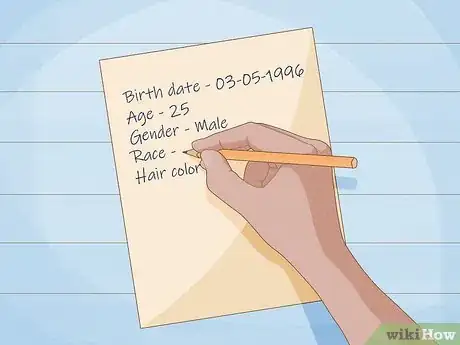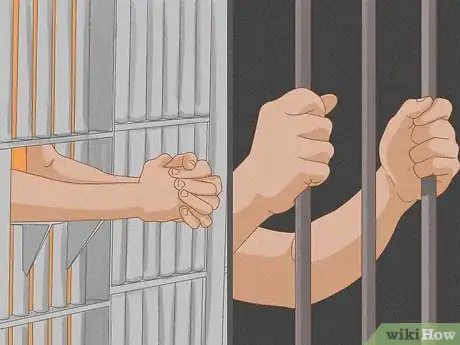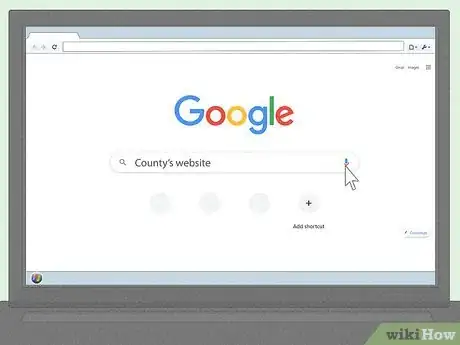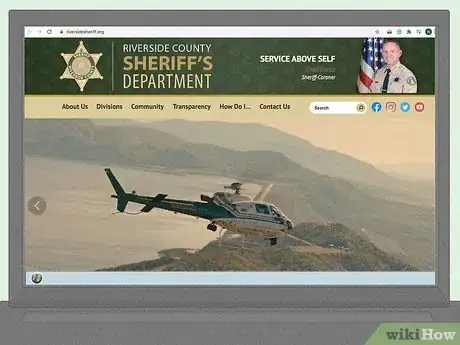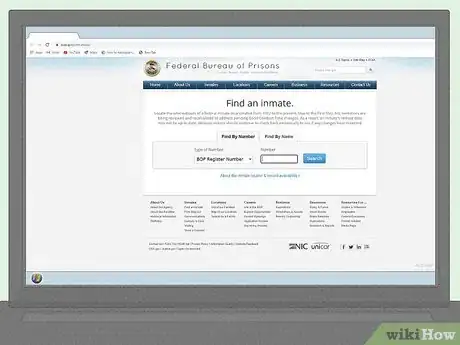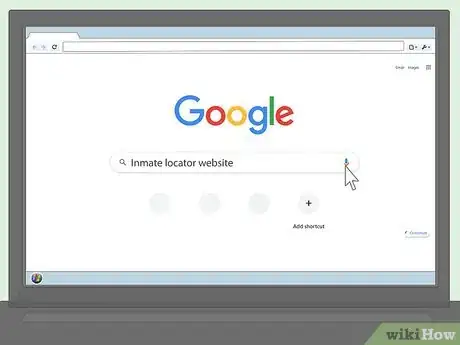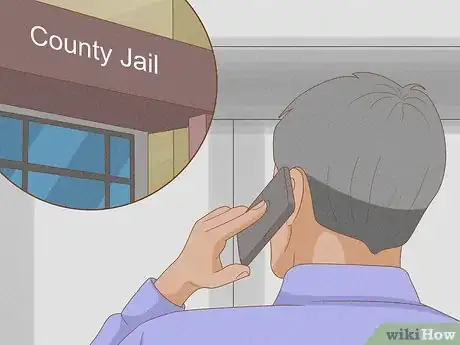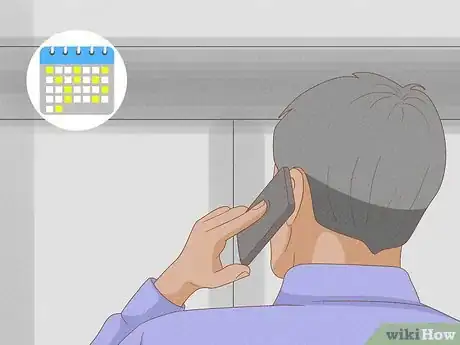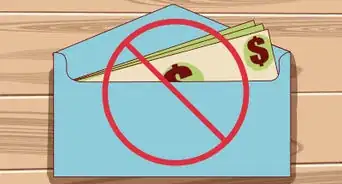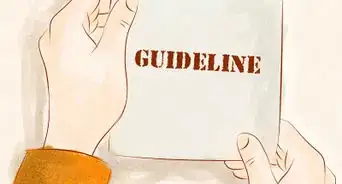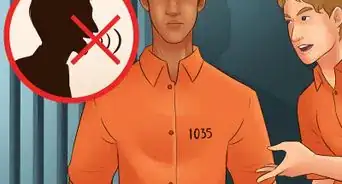This article was co-authored by Clinton M. Sandvick, JD, PhD. Clinton M. Sandvick worked as a civil litigator in California for over 7 years. He received his JD from the University of Wisconsin-Madison in 1998 and his PhD in American History from the University of Oregon in 2013.
This article has been viewed 579,365 times.
Finding out whether a friend or relative is in jail or whether someone who has recently been arrested is still in jail may seem daunting, but it can usually be done with a bit of time and patience. To find out if someone is in jail there are a number of resources you can use. You will need to gather some information about the person and do some searching, either online or over the telephone, but you will probably be able find the person you are looking for in the end.
Steps
Narrowing Your Search
-
1Gather information about the person you are looking for. The more information you have, the easier it will be to find out if that person is in jail. At minimum, you should try to have the individual's full name on hand. Other identifying characteristics, like that individual's birth date, age, gender, race, and hair color, can also be helpful in performing a search, especially if that person has a common name.[1]
- If you do not have the full name of an individual, you might be able to track that person down if you at least have a nickname and date of arrest. You will not be able to use any online resources with this information alone, though, and will likely have a harder time finding out the information you need.
-
2Figure out if the person is likely in a jail or a prison. The people that are normally housed in jail have been arrested but have not yet been arraigned, are awaiting trial but have not been released on bail, or are serving sentences that are less than one year in length.
- If someone is serving a sentence that is longer than one year, they are usually housed in prison.
Advertisement -
3Figure out which jail that person would most likely be held at. If you know the status of the person that you believe may be in jail, it may be easier to figure out which jail he or she is being held in. If the individual has just been arrested, it is likely that he or she will be in the jail of the county where he or she was arrested.
- Additionally, if someone is awaiting trial or arraignment, they will most likely be held in jail in his or her home county, or whichever county that person was arrested in.
- However, sometimes if an inmate is serving his or her sentence, the jail will transfer the inmate for space reasons.
Searching Online
-
1Use an online search engine to find a county’s website.[2] If you know where the person in question was arrested, start by searching for that county's website. If you do not know where the person in question was arrested, but you do know where the individual's home is, search for that county's website instead.
-
2Check the websites for the county sheriff, police department, or municipal court of the county. Some county jail websites have searchable databases of the people being held there. Oftentimes, you do not need anything more than a person's name to search the database.
- Not every county has an online resource that can be used to locate inmates, but nowadays, many do, and you can find the link to that resource on a county law enforcement page.
- Not all online databases are updated often, and the information could easily be out of date.
- If you do find the person that you are searching for online, you will want to confirm that the individual is still there by calling the jail directly.
-
3Check the websites of neighboring counties. If there is any chance that you have the county wrong and that the individual might be held elsewhere, it would likely be in a neighboring county. Try using an online resource that lists all inmate locators for your state.
- Note, however, that these resources may only list counties that have an online inmate locator and may not list neighboring counties that can only be contacted by phone.
-
4Use the “Victim Information and Notification Everyday” (VINE) program.[3] VINE is a service that allows victims of crimes to obtain information about the custody status of offenders. Most states contract with VINE to provide the service, however, in some states, VINE is only available in certain counties or not at all.
- To use VINE, simply visit the website here and click on the state where the offender you are looking for is located. You can search for the offender by name, or by using an identification number.
- Additionally, you can register to be contacted by VINE (either through email, text message or a phone call) when the offender’s custody status changes.
- You can also download the VINE app to stay informed.
-
5Use the Federal Bureau of Prisons website. If you are trying to locate someone who you believe could be in federal jail instead of a county jail then the Federal Bureau of Prisons’ website will be a good place to look. This is a government run website that has a search engine to help you find the person you are looking for.
- To use this website, at the very minimum you need to know the person’s first and last name. Both names must be spelled correctly.[4]
- Keep in mind that the Federal Bureau of Prisons' website only applies to people that are being held in federal custody, as opposed to state crimes. In most circumstances, garden variety crimes are punished under state law, while crimes that take place in multiple states or violate a federal statute will be punished under federal law. For example, a DUI would likely be punished under state law, while violations of the Securities and Exchange Commission rules would be punished under federal law.
- Also keep in mind that this government website only has records for inmates that were incarcerated from 1982 to the present.
-
6Use an inmate locator website. If you did not have luck finding the person you were looking for through the county website or Federal Bureau website, you could try to use a nationwide inmate locator website. In your online search engine of choice, use the search bar and type in ‘find an inmate’ or some variation of this phrase.
- Quite a few websites will come up. Avoid ones that look like they are a scam. For instance, if they are littered with ads or ask you to sign up for something, don’t use that inmate locator.
- Once you find a website, you can choose the state that you are interested in and can be directed to that state’s website or inmate locator system.[5]
Searching Offline
-
1Call the county jail or clerk of courts office.[6] If you do not have internet access, cannot find an online inmate locator for the suspected county of arrest, or if you do not have the necessary information required to use the online inmate locator, call a non-emergency county law enforcement department and speak directly with someone there. These numbers will be on the county jail’s website or in your local phone book.
- If you are unsure about which county the person you are looking for has been arrested in, you may need to call several different offices.
- There might be a special phone number or extension to use for inmate inquiries, but even if you do not know that number and cannot track it down, simply calling non-emergency county law enforcement can be helpful.
- The receptionist or operator should be able to put you in contact with whomever you need to talk to. However, be aware that whomever you talk may not be able to give you the names of people held in that jail if you do not have enough information. Furthermore, understand that it may take a few days for people who have just been arrested to be added to the system.
-
2Ask to speak with the arresting officer. If you still cannot locate the person who you are searching for, but you are certain that the person in question was arrested by an officer of that county, politely ask to speak with the officer who made the arrest. He or she might be able to tell you where the person in question was transported to.
-
3Press forward until you go through all possibilities. After you have contacted any of the counties in which the person in question might be held and after you have spoken with anyone who might be able to direct you elsewhere, you may have to wait a few days and then try again. It might be that the person’s information was misfiled or had not entered the system yet.
- Know that if the person you are looking for is not being held in jail in any of the counties you would expect him or her to be at, there is a decent possibility that the individual is not actually in jail.
- Also, it is possible that whomever you are searching for has given a false name to law enforcement officials. This could result in a very difficult search process.
References
About This Article
To find out if someone is in jail, try to gather as much information about the person as you can, like their full name, date of birth, gender, and hair color. Once you’ve gathered this information, search online for the website of the county where they were arrested, or the county where the person lives. After you locate the website, use the search tool to enter the person’s details so you can perform a search for them. If you find nothing, check the websites of neighboring counties in case the person in question is being held in a jail there. Alternatively, if the county doesn’t offer online resources, search for an inmate locator website, which contains a database of all inmates nationally. You could also try calling the county clerk records office if you’re not having any luck online. For tips from our Legal co-author on how to find out if someone is in prison, read on!
